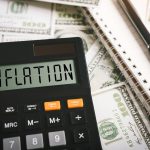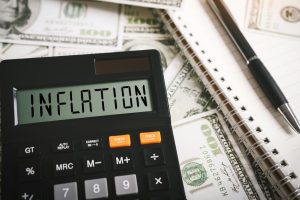
Federal Reserve Governor Michelle Bowman believes additional rate hikes may be necessary to bring inflation down to 2%, raising fears of a Fed-induced stock market crash or recession.
Indeed, in comments on Tuesday, Bowman took a markedly hawkish stance on future monetary policy.
“My baseline economic outlook continues to expect that we will need to increase the federal funds rate further to keep policy sufficiently restrictive to bring inflation down to our 2% target in a timely way,” Bowman said.
According to Bowman, economic uncertainty, “uneven” inflation progress, resilient consumer spending and the potential of new labor shortages all point to the possible necessity of additional rate hikes. Bowman is also of the opinion that some businesses are showing signs of interest rate insensitivity and that changes in economic structure may require higher rates in general compared to before the pandemic.
“In my view, given potential structural changes in the economy, such as higher demand for investment relative to saving, it is quite possible that the level of the federal funds rate consistent with low and stable inflation will be higher than before the pandemic,” said Bowman, per Reuters.
In this regard, Bowman is reportedly in the minority of Fed officials as it pertains to policy. Speaking of which, also on Tuesday, Fed Governor Chris Waller expressed confidence that current interest rate levels will be sufficient to ease inflation to the Fed’s 2% target.
Will the Fed Cause a Stock Market Crash?
Bowman’s comments directly clash with the predominantly dovish sentiment taking over the market in the wake of two strong October inflation readings by way of the Consumer Price Index (CPI) and recently released Personal Consumption Expenditures (PCE) reports.
Both reports showed slowing inflation, with price growth coming out basically unchanged from September to October. The Fed-preferred PCE showed annual inflation of just 3% compared to the year prior, even better than the CPI’s 3.2% annual price increase. While not quite at the Fed’s 2% goal, it’s still an impressive 67% improvement from the 9.1% peak inflation recorded in June 2022. This has raised hopes that the Fed may opt to cut rates at its next policy meeting, having turned the corner on the inflation battle.
Still, fears of a Fed-induced recession are elevated heading into the new year. For months now, economists have predicted that the Fed’s accelerated rate-hike campaign may eventually yield some nasty sideeffects in the form of rising unemployment and reduced consumer spending. That said, at least for the moment, these ramifications haven’t yet been truly felt. Both jobs and spending are proving increasingly resilient to the Fed’s hawkish monetary policy.
Some economists believe the Fed may actually achieve it’s long-shot “soft landing” scenario, where inflation returns to normal levels without triggering an economic downturn. In that regard, cutting rates could help ensure the country “gets while the getting is good.”
According to Bowman, however, ensured long-term price stability may yet require adding more fuel to the fire.
On the date of publication, Shrey Dua did not hold (either directly or indirectly) any positions in the securities mentioned in this article. The opinions expressed in this article are those of the writer, subject to the InvestorPlace.com Publishing Guidelines







